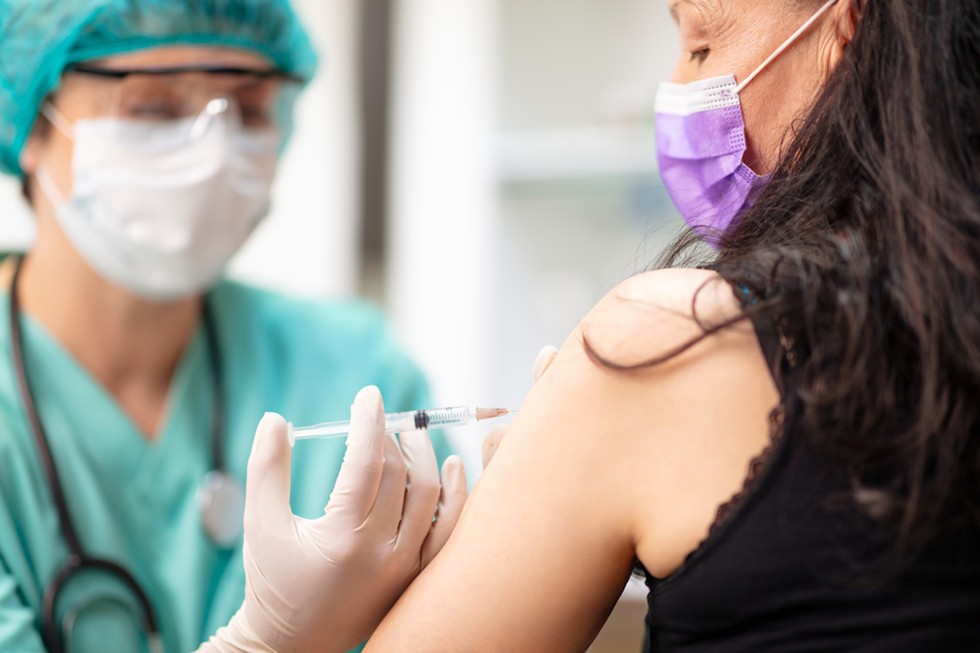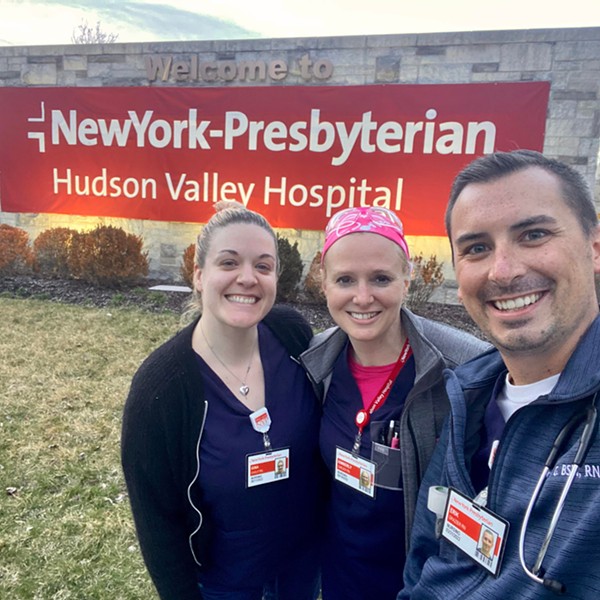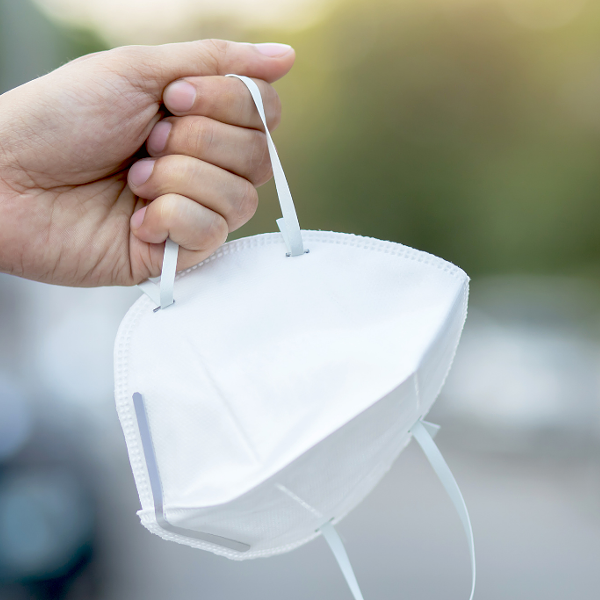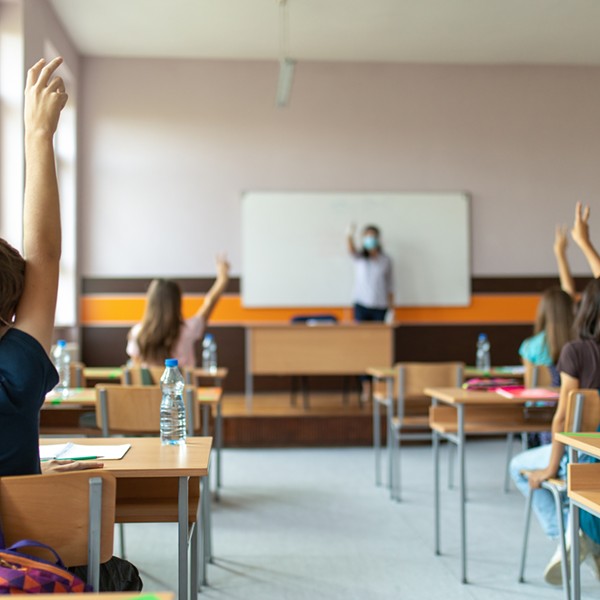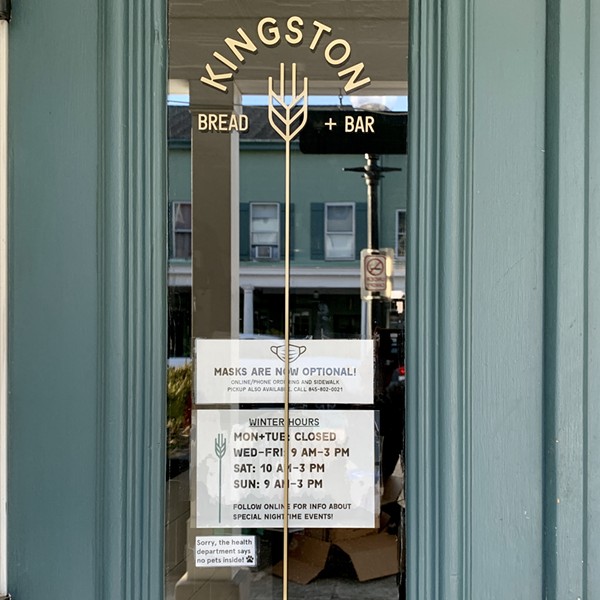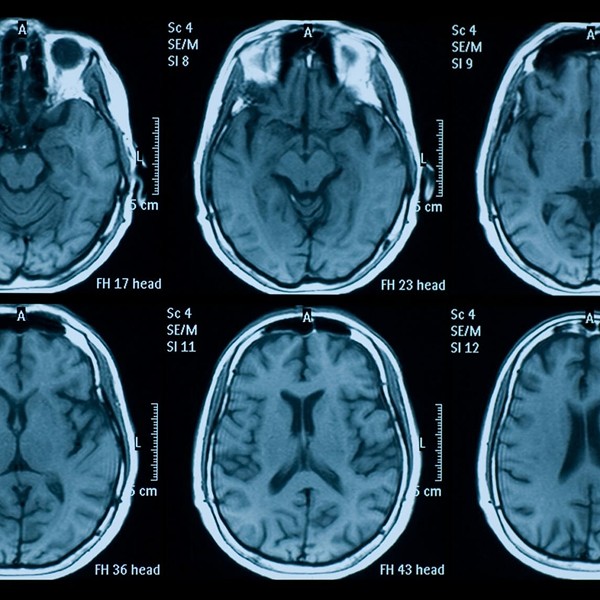This is a roundup of coronavirus news and announcements from New York State and Hudson Valley and Catskills counties for Saturday, October 3 through Monday, October 5.
NEW YORK STATE
465,515 cases confirmed (933 new)
11,297,024 tests performed (76,404 new)
Positive test rate: 1.22%
25,527 deaths (8 new)
636 hospitalizations
149 ICU admissions
New York State coronavirus page
New York State official pressroom
Hotline: (888) 364-3065
The White House blocked new vaccine guidelines from the Food and Drug Administration that would require two months of followup data on all volunteer trial participants—a move that would beef up safety and efficacy data, and also ensure that the vaccine would not be approved before the November 3 election. The New York Times reported late on Friday that White House chief of staff Mark Meadows objected to the regulations, which if passed, would apply to any emergency use authorization for any of the COVID-19 vaccine candidates currently in clinical trials. The very fresh news is being greeted with alarm by public health experts, and is not likely to reassure the growing ranks of Americans who are worried that the government might press a vaccine into service before it is proven safe and effective.
On Monday, amid a raging outbreak of other news, the Centers for Disease Control and Prevention quietly updated its guidelines on how COVID-19 spreads to acknowledge the scientifically documented facts that it spreads through the air and can travel more than six feet. The update contains few surprises for the scientific community, which for months has been mostly arguing about how airborne transmission happens, not if it happens. But it’s important for public policy, because it highlights the dangers of indoor, poorly ventilated spaces, and acknowledges that in some circumstances, six feet of distance may not be enough.
This is the second time the CDC has published guidelines on airborne transmission. Last month, the agency posted guidelines on airborne spread that were quickly scrubbed from the website, an embarrassing incident that officials blamed on a draft published by accident. Useful tip: the Internet Wayback Machine has a tool that lets you compare older versions of the guidance with newer ones.
On the same day that the CDC officially warned that six feet might not be sufficient, Governor Andrew Cuomo got testy with reporters who asked why he and his aides weren’t masking up in Monday’s briefing in New York City—a session conducted in a smaller room than usual, where masked reporters were hard pressed to make enough room for social distancing. “The law is six feet,” Cuomo said. “If new data comes out and says, ‘You should wear a helmet,’ then we’ll have a helmet law. The law says a mask, not earmuffs, because we don’t believe the virus goes in your ear. Maybe somebody will do an article saying it can invade your ear and then we’ll have a new mask with earmuffs,” Cuomo said, clearly not taking the question very seriously.
In Monday’s briefing, Cuomo again addressed the issue of hotspots in the Hudson Valley and New York City, mostly in neighborhoods with large Orthodox Jewish populations. Topping the governor’s list of zip codes with the state’s 20 highest positivity rates in Sunday’s data were 10952 (Monsey) with 17.9 percent and 10977 (Spring Valley) with 15.7 percent, both in the Rockland County town of Ramapo. In third place was 10950 (Kiryas Joel), in the Orange County town of Palm Tree, with 12.2 percent.
Not in Cuomo’s list of top 20 hotspot zip codes: Anywhere in Broome County, where a separate outbreak that has been traced to pubs and restaurants in and around Binghamton is located. The governor mentioned Broome’s hotspot briefly in Monday’s briefing, but did not discuss it much. Things are rough in Broome: Its positivity rate hit 3.1 percent on Sunday, a Binghamton city bus has been converted into a mobile testing site, some schools are moving to remote learning, and a number of restaurants have temporarily reclosed.
The main event of the governor’s Monday briefing was yet another skirmish in a long feud between Cuomo and New York City Mayor Bill de Blasio. The mayor announced Sunday that he was seeking to shut down schools and businesses in hotspot zip codes in Brooklyn and Queens as soon as Wednesday, although the city needed Cuomo’s approval to carry out the plan. But in Monday’s briefing, the governor announced his own plan: The state would shut down schools in New York City hotspots on Tuesday and close any places of worship that would not cooperate with state efforts to enforce limits on gatherings. But it would not close businesses. Cuomo said that other than bars and restaurants, businesses were low priority in shutting down potential transmission sites—behind schools, religious gatherings, and other large public gatherings.
Cuomo plans to meet with Orthodox leaders on Tuesday. “They have to agree that they are going to be a full partner in the enforcement of the rules. That’s condition one,” he said. “If you do not agree to enforce the rules, then we’ll close the institutions down.”
Conflicting messages from New York City and New York State are confusing residents and business owners in the hotspots, The New York Times reported, in a story about the latest Cuomo vs. de Blasio faceoff. The governor’s office is taking issue with the story, but New York Times reporters and editors are standing by it. In one of the most revealing bits: When asked why he didn’t seek state approval before announcing his plan to shut down schools and businesses, de Blasio said that “the best way to ensure there is action is to put the proposal on the table publicly.”
The timing of all this brouhaha is a little off, considering the Jewish holiday calendar. On Sunday, when de Blasio announced his plan to shut down activity in several neighborhoods, Orthodox residents were celebrating Sukkot, and not using phones, computers, or televisions to follow the news. When the school shutdown begins, it won’t affect yeshivas: Most Orthodox yeshivas are closed for the holiday until October 12 anyway, the Jewish Telegraph Agency writes.
Tensions over the city and state’s targeted enforcement efforts are running hot in Orthodox neighborhoods in New York City, the Associated Press reports—and so is pandemic burnout. “People are very turned off and very burned out,” said Yosef Hershkop, a Hasidic Jew from Brooklyn who works for a chain of urgent-care centers. “It’s not like we’re the only people in New York getting COVID.”
It remains unclear whether Cuomo intends to close any schools in Rockland and Orange counties, where infection rates in the most heavily affected zip codes are even higher than in New York City hotspots. Cuomo said his team was looking at the possibility. “There’s some disparity in what the infection rates are and we want to drill down on the data,” he said.
Oy vey: In a PowerPoint slide containing images allegedly illustrating recent flouting of pandemic guidelines in Orthodox communities, Cuomo used a photo from 2006 taken at the funeral of Rabbi Moshe Teitelbaum in Kiryas Joel. Both the New York City press and the Jewish press gave the governor some heat for using the image. Cuomo spokesman Rich Azzopardi apologized, calling it a “staff error” that was corrected with a current image in real time during the Monday briefing.
A belligerent West Seneca pub-goer shoved 80-year-old Rocco Sapienza to the ground after Sapienza confronted him for not wearing a mask. Sapienza hit his head and never regained consciousness after the assault; he died five days later. His assailant, Donald Lewinski of West Seneca, is charged with criminally negligent homicide.
Last week, Cuomo threatened to fine local governments $10,000 a day if they didn’t step up their game on pandemic enforcement. Over the weekend, CNHI reporter Joe Mahoney talked to representatives from the Association of Counties and the New York Sheriff’s Association to see what they thought of the governor cracking down on local government. The answer? Not much. County government advocate Stephen Acquario called Cuomo’s remarks “most unusual, highly offensive and totally offensive.” Like the state itself, counties are currently facing extreme levels of fiscal stress and managing a lot of angry, stressed-out constituents. “Veiled and not-so-veiled threats from the state of New York are not productive,” he said.
Regal Cinemas is closing all of its movie theaters nationwide for good on Thursday—and blaming New York State, the Times Union reports. New York, along with California, has an outsized impact on the film industry, and with movie theaters still closed in the state, New York’s shutdown is taking a toll on all aspects of Hollywood. Worth noting: Even in states where theaters have been allowed to reopen, a lot of patrons are staying away.
Cuomo said in a radio interview Monday that after talking with House Speaker Nancy Pelosi and Treasury Secretary Steve Mnuchin, he still “believe[s] there will be federal aid” to states. But with three senators having tested positive for COVID-19 over the weekend, and two more in quarantine for possible exposure, the Senate will recess for two weeks, which will delay any forthcoming coronavirus relief package.
The US has already spent a staggering $4 trillion on coronavirus aid. Why didn’t it work? The Washington Post gets into it, with lots of charts and figures, but here’s the short version: “The legislation bestowed billions in benefits on companies and wealthy individuals largely unscathed by the pandemic…By failing to focus on containing the virus and the particular harms of the pandemic, the relief packages distributed money to those with little need for it while allowing the illness, which is now more widespread than when the bills passed, to outstrip the aid.”
The number of White House officials, members of Congress, reporters, and other members of the Trump administration’s closest circle who have tested positive continues to grow. So does a collaborative data visualization project tracking who attended key events, when they were tested, what the results were, and other information. Fast Company reports that the incredibly useful “COVID-19 at the White House” dashboard is being maintained by Peter Walker of the COVID Tracking Project, epidemiologist Jesse O’Shea, and Middlebury College student reporter Benjy Renton, who is living proof that you don’t need a degree to do amazing work in journalism.
Out of the spotlight, at least two White House housekeeping staffers have also tested positive, The New York Times reports. On Monday, The Washington Post and The Atlantic also dug into the dilemma faced by the non-political staffers in Trump’s world, who are working in what is clearly an increasingly dangerous workplace.
The White House is not contact tracing last Saturday’s Rose Garden celebration for Supreme Court nominee Amy Coney Barrett, and is refusing to allow the Centers for Disease Control and Prevention to contact trace.
In other extremely dumb news, the UK government accidentally left a week’s worth of new data, almost 16,000 COVID-19 cases, out of its national tracking system, and discovered the missing data on Sunday, causing a huge one-day case spike. Government officials explained that they were relying on an Excel spreadsheet that hit its maximum capacity, and failed to add any new data once it reached its limit.
The Daily Gazette has a deep dive on the Empire Center for Public Policy’s lawsuit to force the state Department of Health to release full data on COVID-19 deaths linked to nursing homes. The lawsuit points out a contradiction that puts the lie to the state’s stated reason for refusing to release the data: the DOH reports the number of COVID deaths in nursing homes as accurate, but refuses to report the number of nursing-home residents who died outside nursing homes on the grounds those numbers may not be accurate. But both numbers are self-reported by nursing homes on the same form.
Announced by New York State on Monday and over the weekend:
- On Monday, Cuomo signed an executive order extending the expiration date of vehicle registrations and vehicle inspections to November 3.
Below is a Flourish animation we have compiled that shows the rate of active cases per 10,000 residents for each county in our coverage region from May 12 through the present date.
LOWER HUDSON VALLEY
County coronavirus pages: Rockland, Westchester, Putnam
University coronavirus pages: Sarah Lawrence, Iona, SUNY Purchase, Manhattanville, Westchester Community College, Rockland Community College, Dominican, Mercy
Putnam County hasn’t gotten the same amount of recent attention as Rockland and Westchester, but cases there did rise last week. The county’s seven-day rolling average of positive tests is 1.6 percent, above the state average, and there are 32 active cases in Putnam. The county health department released a press release Monday reminding residents of best practices to limit the spread of the pandemic.
Westchester County Executive George Latimer said in his Monday briefing that there are 674 active cases in the county, well above the summer average. But Latimer noted that the rise is due in part to increased testing, and there’s evidence to support that claim: The county’s percentage of positive tests has hovered around one percent, and hospitalizations remain fairly low.
LoHud.com has a deep dive into the recent spike in cases in Rockland County. Though the communities of Monsey and Spring Valley have gotten most of the attention, Rockland Health Commissioner Dr. Patricia Ruppert stressed Friday that the outbreak “is not a one-community issue. We are really one community and we need to face this all together.”
MID-HUDSON VALLEY
County coronavirus pages: Orange, Dutchess, Ulster, Columbia
University coronavirus page: Bard, Vassar, Marist, SUNY New Paltz, SUNY Ulster, Columbia-Greene Community College, SUNY Orange
Coronavirus cases are climbing in Ulster County. Over the last week, the county has confirmed 44 new cases, according to its dashboard. There are 152 active cases in Ulster County, the highest number since August 11. Deputy County Executive Marc Rider said 13 of the new cases came from three identified clusters, according to the Daily Freeman: a multifamily housing complex in Ellenville, a party in Marlborough, and a trio of group home facilities run by the state Office for People with Developmental Disabilities. Ulster County’s percentage of positive tests climbed to 1.8 percent on Sunday.
A petition out of Middletown to give families the choice of whether or not to send their kids into school buildings under the district’s hybrid education model garnered hundreds of signatures in just over 24 hours. Two parents, one of whom is a history teacher locally, started the Change.org petition Sunday morning, with cases rising rapidly in Orange County. “I can say this as a teacher who is actually doing a hybrid model that is like this, there is no rational reason to say no,” said Darrell McElroy. Middletown Schools Superintendent Richard DelMoro told the Times Herald-Record that while the district believes in its model, it is taking the parents’ concerns seriously, and he expects to have an answer to the petition. within three days.
Columbia County reported two new cases on Saturday, but none in its Monday update. There are 13 active cases in the county. One of Saturday’s positive tests appears to be from the fruit farm near Hudson where an outbreak was discovered late last week. There are now 11 COVID-19 cases linked to the farm.
CATSKILLS
County coronavirus pages: Sullivan, Delaware, Greene, Schoharie
University coronavirus pages: SUNY Cobleskill, SUNY Delhi, SUNY Sullivan
There was a sharp uptick in cases in Greene County last week: 19 people tested positive between October 1 and 3, about 3.2 percent of those tested. It’s unclear, at this point, what is driving the brief spike. On Sunday, only one person in the county tested positive. There are 23 active cases in the county as of Monday afternoon.
Delaware County announced two new positive cases on Monday, bringing its active total to eight.
On-the-ground local reporting and analysis has never been more important, and that’s what The River aims to provide. But we need your help to continue the work we’re doing. Will you support our journalism today?
OF INTEREST?
The River has a guide on where, how, and when to get tested for the coronavirus in the Hudson Valley and Catskills. To read more of our coronavirus coverage, visit our coronavirus page.
The River is collaborating with WGXC to announce these updates over the air. To listen, tune in to 90.7 FM at midnight, 5am, 7am, or 9am, or visit the audio archive online.
La Voz, una revista de cultura y noticias del Valle de Hudson en español, está traduciendo estos resúmenes y co-publicandolos en su página web. Leyendo aqui. También puede escuchar actualizaciones diarias por audio en el show “La Voz con Mariel Fiori” en Radio Kingston.







